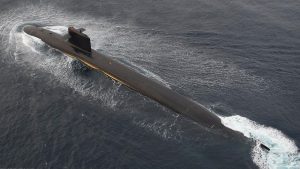Instead of purchasing a U.S. Navy submarine, Australia is better off partnering with the United Kingdom and purchasing an Astute-class submarine.

Australian defense professionals want their country to move up and upgrade its troops, with one area of emphasis being on strengthening their nation’s capabilities in underwater combat. The Australians hope that the one-year-old AUKUS treaty between the U.S., U.K., and Australia will eventually result in Canberra purchasing a nuclear-powered assault submarine. The American Virginia-class attack boats or the British Astute-class attack boats were available to Australia’s navy.
Which of these two possibilities would Australia choose if given a choice?
According to a U.S. House Armed Services Committee representative, Australia’s chances of acquiring a Virginia class are unfavorable. The ranking member of the Subcommittee on Seapower and Projection Forces, Rep. Rob Wittman of Virginia, is not persuaded that the United States should construct a submarine expressly for sale to Australia. “There’s been a lot of chatter about, well, the Australians would just buy a U.S. submarine,” Wittman told Breaking Defense at the Reagan National Defense Forum this month. It won’t happen, I assure you.
Given that the United States is on a tight deadline to develop its submarines, lawmakers like Wittman are not prepared to peel off an American boat to meet Australian needs. One option is to help Australia build a nuclear submarine independently, which would be a difficult engineering and design challenge for the Australian military industry.
Wittman suggested that Australian naval officials at least visit shipyards like HII and Electric Boat to get an idea of what a project of this size would entail.
Wittman did raise the possibility of basing a Virginia-class submarine with an American-Australian crew in Australia. It would be Canberra’s second-best choice. The submarine wouldn’t technically be Australian property, but it would be useful for the interests of both nations.
The British may help the Australians acquire an Astute-class rapid attack submarine instead. The British are already carrying out the concept of a unified crew. According to the AUKUS agreement, Australian sailors were receiving training on the HMS Anson, the fifth Astute-class submarine, according to a statement by the British Royal Navy in August.
British instructors are teaching undersea nuclear operations to Australian submariners.
The HMS Anson and other Astute-class vessels are approximately 30% larger than previous British submarines. The Spearfish heavy torpedo and the 1,240-mile-range Tomahawk Block IV cruise missile are two of the 38 weapons the Astute class can deploy.
The Astute class is used in the Thales Underwater Systems Sonar 2076 and the Common Combat System of today.
During training with the Virginia-class ship USS New Mexico in 2012, an Astute-class boat surprised the Americans with its skills.
When it comes to acquisition, the Astute class might outperform the Virginia class, according to the Australian navy. If the committees broadly accept Wittman’s ideas, the Americans are not enthusiastic about selling a Virginia-class ship to Australia.
The British might be more likely to consent to release a submarine under the treaty’s terms. Also, the United Kingdom is already providing Australian sailors with training to get them used to nuclear-powered submarine combat.
In the meantime, it might take the Australians 15 to 20 years to construct their nuclear-powered submarine. The Australians would do better at this time to team up with the United Kingdom to buy an Astute.






